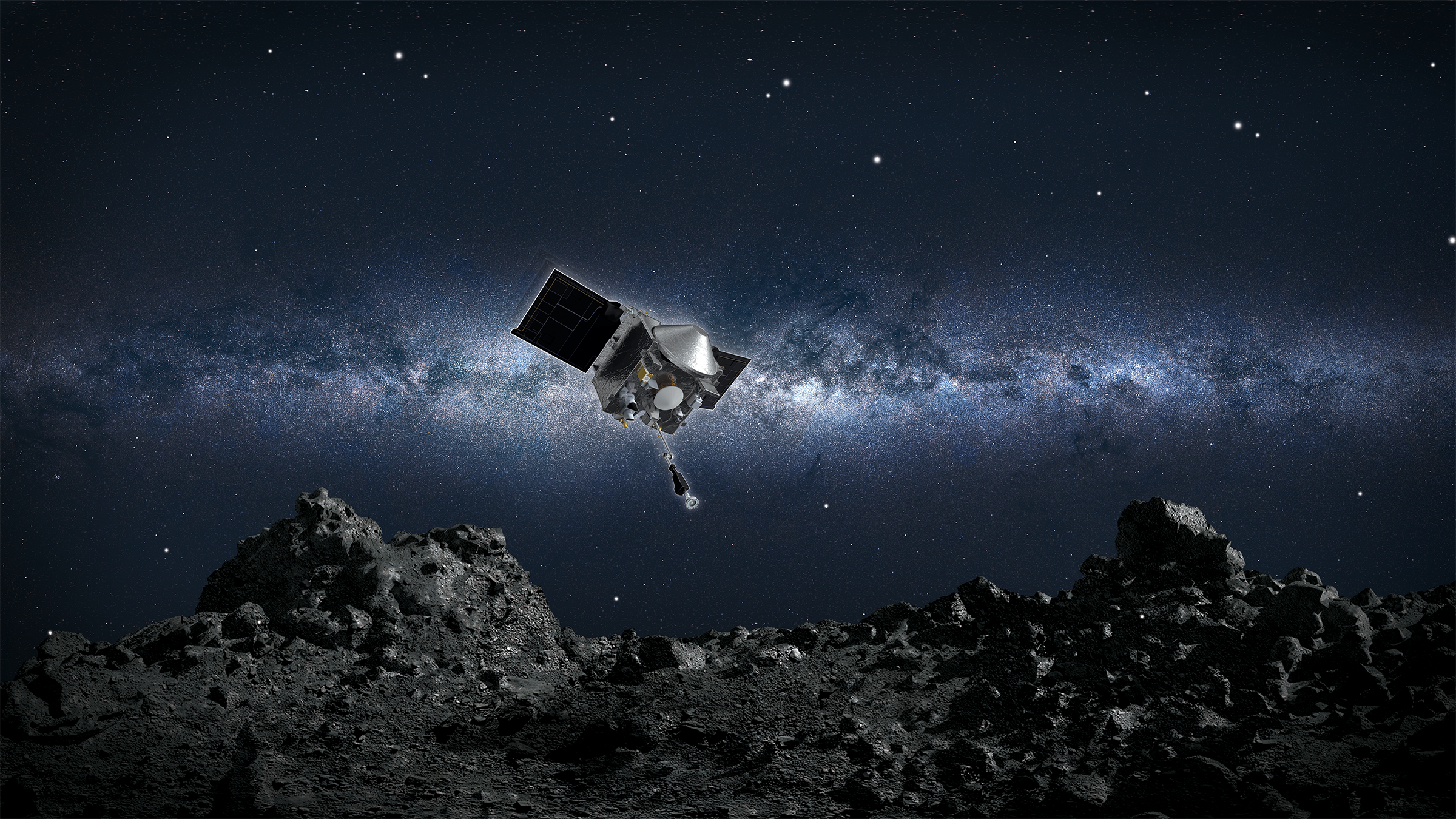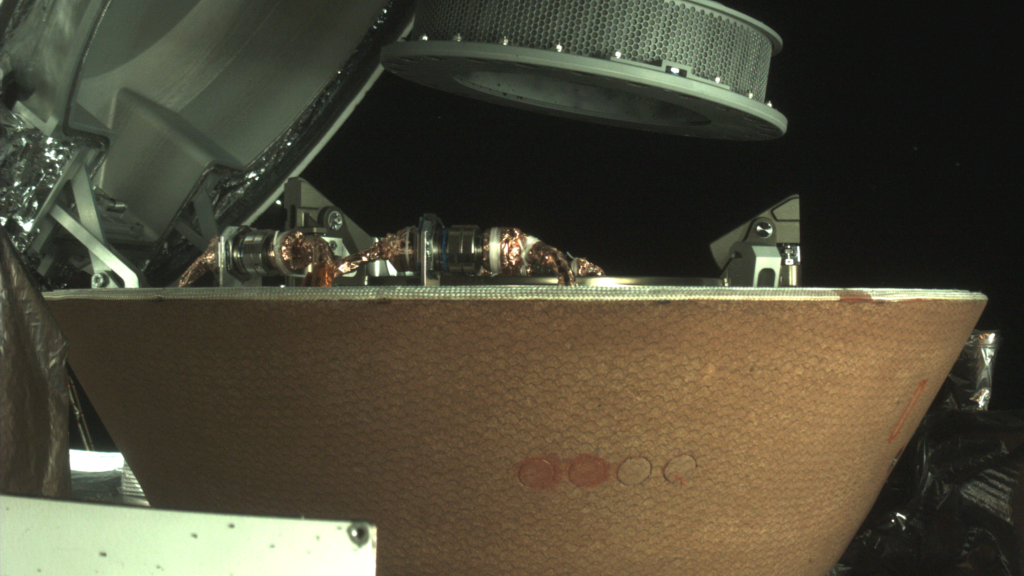OSIRIS-REx asteroid samples will land on Earth in 2023 and scientists can't wait
Returning to Earth is only the beginning of the journey for these pieces of asteroid Bennu.

Six years and more than 200 million miles later, NASA's OSIRIS-REx spacecraft is finally on its way home from the asteroid Bennu. In just under a year, on Sept. 24, 2023, the mission's sample collector — a basket full of asteroid dust and rocks — will return to Earth's surface, while the spacecraft itself zooms on to its next destination.
This week at the American Geophysical Union (AGU) 2022 Fall Meeting held in Chicago and virtually, planetary scientists gathered to discuss what to expect from next year's OSIRIS-REx sample return. Their new year's resolution? To get this asteroid sample home and into a lab safely, preserving it for decades of science to come.
OSIRIS-REx, more formally Origins-Spectral Interpretation-Resource Identification-Security-Regolith Explorer, launched in 2016 and spent almost three years exploring Bennu, an ancient asteroid whose orbit crosses Earth's.
Related: Dramatic sampling shows asteroid Bennu is nothing like scientists expected
The space rock is a particularly interesting target for both science and planetary defense, which focuses on protecting Earth from asteroid impacts. Bennu is a type of asteroid that astronomers expect hasn't changed much since it formed, making it a well-preserved specimen from the early solar system — a window back in time. Since it's orbit passes Earth's, however, Bennu is also a threat (albeit an unlikely one) to humanity, and understanding its nature may be crucial if a future mission tries to move it out of Earth's path.
The mission orbited Bennu, collecting images and other data of the asteroid, then approached the surface to use its small sample-collecting arm. This contraption, known as the TAGSAM, collected between 5 and 12 ounces (150 to 350 grams) of asteroid material — about the weight of a hamster, and much more than the planned 2 ounces (60 g). In fact, TAGSAM caught so much asteroid material that rubble actually started leaking and overflowing its container.
"The fact that we got more than we thought we might still means every small gram of that asteroid material is still super valuable to us," Nicole Lunning, a planetary scientist at NASA's Johnson Space Center in Texas, said during a media event at the AGU meeting on Monday (Dec. 12).
Breaking space news, the latest updates on rocket launches, skywatching events and more!
The sample of Bennu's rock and dust still has a long way to go, with almost a year of space travel time left. But from entering Earth's atmosphere to touching down in a flat region of Utah, the sample return capsule's journey will only take 13 minutes. The first priority once the capsule lands is to get it into a clean room immediately, ensuring that the sample isn't contaminated with Earth dust. Within a few days, it will be flown to its final home at Johnson Space Center for further study.
Of the sample, 75% will be preserved for future scientists, while the remaining 25% will be analyzed and cataloged by the OSIRIS-REx team. They even have special equipment, like vacuum tweezers, to ensure they gather every bit of the space gunk coating the spacecraft. After an initial analysis, Lunning says they will "really carefully and slowly, methodically, collect all that precious dust."
The first preliminary results should be available by Oct. 2, 2023, she said, with much more to come as scientists dig into the data.
And although the sample capsule is coming back to Earth, the OSIRIS-REx spacecraft itself is only dropping by for a quick hello before continuing through the inner solar system. The project was recently approved for an extended mission to rendezvous with the famous harbinger of destruction, the asteroid Apophis.
The spacecraft can't collect another sample, since that piece of equipment has already been used, but the team is looking forward to getting a close-up look at a different hazardous near-Earth asteroid. The spacecraft is due to arrive just a week before Apophis makes a particularly close approach to Earth, and will study the space rock for about 18 months.
But first, there's lots to learn once our piece of Bennu hits the ground just one short year from now.
Follow the author at @briles_34 on Twitter and Followus on Twitter @Spacedotcom and on Facebook.

Briley Lewis (she/her) is a freelance science writer and Ph.D. Candidate/NSF Fellow at the University of California, Los Angeles studying Astronomy & Astrophysics. Follow her on Twitter @briles_34 or visit her website www.briley-lewis.com.


